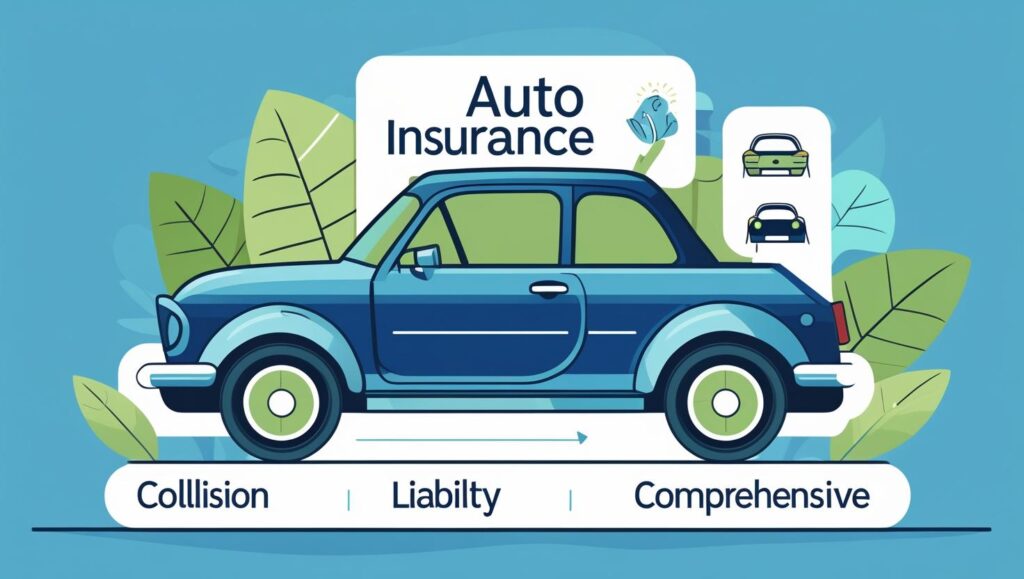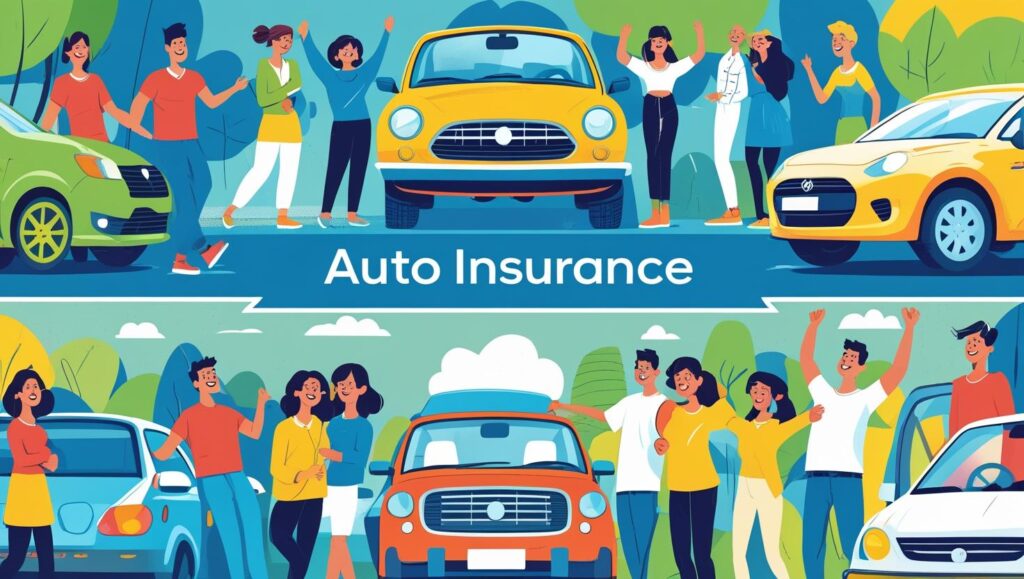
Introduction
Auto Insurance is a crucial financial safety net for drivers, protecting them from significant financial losses in case of accidents, theft, or other vehicle-related incidents. It is not only a legal requirement in most places but also a practical necessity to safeguard one’s finances and assets.
This article provides a detailed overview of auto insurance, covering its importance, types of coverage, factors affecting premiums, tips for choosing the right policy, and ways to save money on insurance.
Why Auto Insurance is Important
1. Legal Requirement
In most states and countries, having auto insurance is mandatory. Driving without insurance can result in fines, license suspension, or legal penalties. Minimum liability coverage is typically required to cover damages or injuries you may cause to others.
2. Financial Protection
Auto accidents can lead to expensive repairs, medical bills, and legal fees. Without insurance, these costs would come out of pocket, potentially causing financial strain. Insurance helps mitigate these expenses.
3. Vehicle Protection
Comprehensive and collision coverage ensures that your own vehicle is repaired or replaced in case of damage from accidents, natural disasters, or theft.
4. Peace of Mind
Knowing you’re financially protected in case of an accident provides mental relief, allowing you to drive with confidence in the future.
Types of Auto Insurance Coverage
Auto insurance policies consist of several types of coverage, each serving a different purpose. Understanding these can help you choose the right policy.
1. Liability Insurance
- Bodily Injury Liability (BIL): Covers medical expenses, lost wages, and legal fees if you injure someone in an accident.
- Property Damage Liability (PDL): Pays for damages to another person’s property (e.g., vehicles, fences, buildings).
2. Collision Coverage
Pays for repairs or replacement of your vehicle if it’s damaged in a collision, regardless of fault.
3. Comprehensive Coverage
Covers non-collision-related damages, such as theft, vandalism, fire, floods, or hitting an animal.
4. Personal Injury Protection (PIP) / Medical Payments (MedPay)
- PIP: Covers medical expenses for you and your passengers, regardless of fault (required in no-fault states).
- MedPay: Similar to PIP but more limited in coverage.
5. Uninsured/Underinsured Motorist Coverage (UM/UIM)
- Uninsured Motorist (UM): Protects you if you’re hit by a driver with no insurance.
- Underinsured Motorist (UIM): Covers costs if the at-fault driver’s insurance is insufficient.
6. Gap Insurance
If your car is totaled, gap insurance covers the difference between the car’s actual cash value and the remaining loan balance.
7. Rental Reimbursement & Towing Coverage
- Rental Reimbursement: Pays for a rental car while your vehicle is being repaired.
- Towing & Labor: Covers roadside assistance and towing costs.
Factors That Affect Auto Insurance Premiums
Insurance companies assess multiple factors to determine your premium. Understanding these can help you find ways to lower costs.
1. Driving Record
A clean driving record leads to lower premiums, while accidents, DUIs, or traffic violations increase rates.
2. Age & Gender
Younger drivers (especially teens) and male drivers typically pay higher premiums due to higher risk statistics.
3. Vehicle Type
Luxury cars, sports cars, and high-theft-risk vehicles cost more to insure.
4. Location
Urban areas with higher traffic and crime rates result in higher premiums than rural areas.
5. Credit Score
In many states, a good credit score can lower insurance costs, as insurers associate good credit with lower risk.
6. Annual Mileage
Driving fewer miles annually can qualify you for discounts (e.g., low-mileage or usage-based insurance).
7. Deductible Amount
A higher deductible lowers your premium but means you pay more out of pocket in a claim.
8. Claims History
Frequent claims can increase premiums, as insurers see you as a higher-risk customer.
How to Choose the Right Auto Insurance Policy

1. Assess Your Needs
- If you have an older car, you might skip collision/comprehensive coverage.
- If you have a new or financed car, full coverage is advisable.
2. Compare Quotes
Get quotes from at least three insurers to compare prices and coverage options.
3. Check Insurer Reputation
Research customer reviews, financial stability (e.g., AM Best ratings), and claim settlement processes.
4. Look for Discounts
Common discounts include:
- Safe driver discounts
- Multi-policy (bundling home & auto)
- Good student discounts
- Anti-theft device discounts
- Pay-in-full discounts
5. Understand Policy Terms
Read the fine print on exclusions, claim procedures, and coverage limits.
6. Consider Usage-Based Insurance (UBI)
Programs like Progressive’s Snapshot or Allstate’s Drivewise track driving habits and offer discounts for safe driving.
Ways to Save Money on Auto Insurance
1. Increase Your Deductible
Opting for a higher deductible can significantly lower your premium.
2. Maintain a Good Driving Record
Avoid accidents and traffic violations to keep premiums low.
3. Improve Credit Score
Pay bills on time and reduce debt to improve your credit rating.
4. Bundle Policies
Combine auto and home insurance with the same provider for discounts.
5. Ask About Discounts
Inquire about all possible discounts (e.g., military, alumni, or professional association discounts).
6. Drive Less
Low-mileage drivers may qualify for pay-per-mile insurance.
7. Choose a Safe Vehicle
Cars with high safety ratings and anti-theft features often have lower premiums.
Common Auto Insurance Mistakes to Avoid
1. Skipping Coverage to Save Money
Opting for minimum liability only can leave you underinsured in a major accident.
2. Not Reviewing Policy Annually
Regularly update your policy to reflect life changes (e.g., moving, buying a new car).
3. Overlooking Deductibles
Ensure you can afford the deductible you choose.
4. Not Reporting Changes
Failing to inform your insurer about changes (e.g., new drivers, address) can void coverage.
5. Ignoring Discounts
Many drivers miss out on savings by not asking about available discounts.
Conclusion
Auto insurance is a vital aspect of responsible vehicle ownership, offering financial protection, legal compliance, and peace of mind. By understanding the different types of coverage, factors affecting premiums, and ways to save money out of pocket in the future, you can make informed decisions when selecting a policy.
Regularly reviewing your insurance needs and comparing quotes ensures you get the best coverage at an affordable price. Whether you’re a new driver or an experienced one, having the right auto insurance policy is key to safeguarding your finances and staying protected on the road.
By following the tips in this guide, you can navigate the complexities of auto insurance and secure a policy that meets your needs without breaking the bank. Drive safely, stay insured, and enjoy the peace of mind that comes with proper coverage.

No Responses